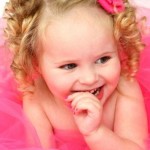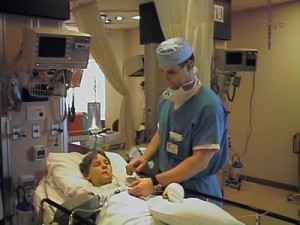Intravenous (IV) Sedation (continued)
IV sedation performs under a hospital setting with fully-equipped facilities and it can only be administered by a certified anesthesiologist. There are strict rules and regulations set by every state’s Dental Board when it comes to anesthesia equipments and drugs used. Therefore, you should make sure your child is being treated by a qualified and experienced anesthesiologist.
Â
4. Is Conscious Sedation safe for my child?
Â
Â
Yes, it is safe. Your child’s heart rate and oxygen level will be monitored the entire time by doctors and anesthesiologists to ensure that your child is perfectly fine. Instructions will be given to parents prior to the appointment to make sure that your child is not taking any medications that may complicate the sedation process and that he/she is healthy for treatment.
Â
Â
5. What is General Anesthesia?
General Anesthesia is an induced state of unconsciousness or complete loss of protective reflexes, including the inability to continually maintain an airway independently and respond purposefully to physical stimulation or verbal command.
Â
Dental treatment under general anesthesia may be the only solution when no other methods of pain control can be considered. This include some of the surgical procedures that are extended in time and overwhelming for the children especially those who are:
- Severely mentally and/or physically handicapped children who lack the ability to cooperate during treatment
- Severe management problems in patients with a genuine psychiatric disorder
- Extensive and/or complicated treatment need in children and adolescents with lack of coping ability (for example, due to immaturity, dental anxiety/dental phobia, disability)
Â
6. Will my child feel any pain during conscious sedation?
Â
No, you will not feel any pain during conscious sedation. If you undergo general anesthesia, you cannot feel pain at all.
Â
7. What are the pre-operative instructions to parents?
Â
1)Â Prior to conscious sedation, your child should fast in order to prevent possible aspirations in case of nausea and vomiting.
- Â No clear liquids 2 to 3 hours before sedation. Clear liquids are non-fruity juice, water, tea and coffee.
- Â No solid food or non-clear liquids 4 to 6 hours before sedation. All milk products (non-clear liquids) are considered solid food.
Â
2)Â Parents should inform the dentist about any drug reaction, medical history or illness your child has experienced.
3)Â Dress your child in loose fitting, comfortable clothing.
4)Â Child must be accompanied by a parent for all appointments.
5)Â Make sure that your child goes to the bathroom immediately prior to arriving at the dental clinic.
6)Â Watch your child closely while the medication is taking effect. Hold them in your lap or keep close to you. Do not let them “run around.”
7)Â Your child will act drowsy and may become slightly excited at first.
Â
Â
8. What can parents expect after the dental treatment is over?
 After the treatment is over, although your child may be able to leave the dental chair, but it is best to keep him/her in the dental surgery for another 20 minutes for observation.
Â
Â
Post-operative Instructions
1)Â Child may remain sleepy and weak for some time after the appointment.
2)Â Do not allow your child to bite his/her lips and tongue if local anesthesia is used because this will cause ulceration and swelling.
3)Â Back at home, your child should keep under adult supervision and take rest for the day until he/she is fully recovered. Keep them away from areas of potential harm.
4)Â If your child wants to sleep, place them on their side with their chin up. Wake your child every hour and encourage them to have something to drink in order to prevent dehydration.
5)Â Start off with cold drinks to help reduce any nausea sensation.
6)Â Offer clear liquids first and then advance to solid food (light and digestible) slowly as tolerated.
7)Â If your child vomits, help them bend over and turn their head to the side to insure that they do not inhale the vomit.
8)Â Should any unusual situation arise, please call the dentist as soon as possible.





